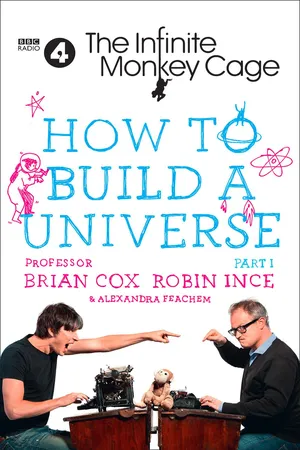
eBook - ePub
The Infinite Monkey Cage – How to Build a Universe
Prof. Brian Cox, Robin Ince, Alexandra Feachem
This is a test
- English
- ePUB (mobile friendly)
- Available on iOS & Android
eBook - ePub
The Infinite Monkey Cage – How to Build a Universe
Prof. Brian Cox, Robin Ince, Alexandra Feachem
Book details
Book preview
Table of contents
Citations
Frequently asked questions
How do I cancel my subscription?
Can/how do I download books?
At the moment all of our mobile-responsive ePub books are available to download via the app. Most of our PDFs are also available to download and we're working on making the final remaining ones downloadable now. Learn more here.
What is the difference between the pricing plans?
Both plans give you full access to the library and all of Perlego’s features. The only differences are the price and subscription period: With the annual plan you’ll save around 30% compared to 12 months on the monthly plan.
What is Perlego?
We are an online textbook subscription service, where you can get access to an entire online library for less than the price of a single book per month. With over 1 million books across 1000+ topics, we’ve got you covered! Learn more here.
Do you support text-to-speech?
Look out for the read-aloud symbol on your next book to see if you can listen to it. The read-aloud tool reads text aloud for you, highlighting the text as it is being read. You can pause it, speed it up and slow it down. Learn more here.
Is The Infinite Monkey Cage – How to Build a Universe an online PDF/ePUB?
Yes, you can access The Infinite Monkey Cage – How to Build a Universe by Prof. Brian Cox, Robin Ince, Alexandra Feachem in PDF and/or ePUB format, as well as other popular books in Physical Sciences & Cosmology. We have over one million books available in our catalogue for you to explore.
Information
Topic
Physical SciencesSubtopic
Cosmology
INSIGNIFICANCE
A perspective
There is a problem of insignificance when looking at the night sky.
It takes four years for the light from the closest star to Earth, Proxima Centauri, to reach us.
It takes over 16,000 years for the light from the furthest star visible with the naked eye, V762 Cas in the constellation of Cassiopeia, to reach us. The light we see is older than our civilisation.
The Milky Way is a hundred thousand light years across, and it is one of billions of galaxies. You can understand that when dealing with such magnitudes, people can feel like specks, less than specks, barely the dust of our universe.
During every series of Monkey Cage we receive emails and letters from people questioning their own significance after being bamboozled by a cosmological episode.
‘I wish I’d never looked through that telescope, now I feel insignificant.’

After watching a lecture on the grandeur of the Universe, hearing about the light years between the billions of galaxies and the speed of expansion, with everything getting further and further apart, that sense of tiny speck-ness can be palpable. You don’t have to travel far from the Earth’s surface for human beings to become indistinguishable from the rivers, rocks and sea, and a little further away, you’ll find there’s no visible trace of the civilisation that glows and pulses as we walk through it.

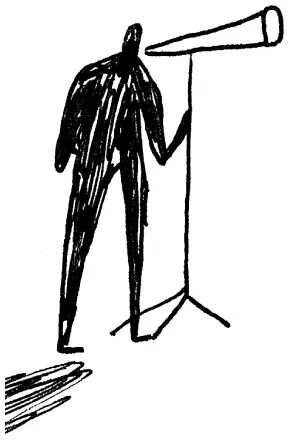
As Voyager’s image of our planet as a ‘pale blue dot’, taken from the parochial proximity of Neptune, shows, you don’t have to travel a great distance for our home to look like nothing much at all.

The Pale Blue Dot, taken by Voyager 1 on Valentine’s Day, 1990, 6 billion kilometres from home.

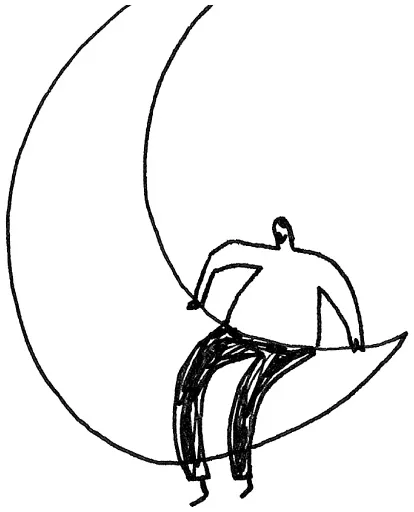
Added to the complexity of your structure, even by Earth’s standards, your brain is complex and questioning. This may not be an ultimate advantage. It could be this very complexity that spells out your doom. You may be a creature so complex by the standards of the Cosmos that you are driven mad by this complexity. This ability to change your environment, to build and to destroy, to play around with matter at a subatomic scale, could be the making of you and the undoing of you.
Your significance may create and it may destroy.
There may be nothing else out there that will ever know that there was something that once thought and created colliders, and lasers and fibre-optic cables, and tried to find out how the Universe began and how it might end. Or other parts of the Universe may be teeming with life that would consider us as primitive as we consider a maggot.
You may be small, but you are unusual, and you know it, and there’s nothing else in this solar system beyond Earth that could say that, or say anything at all.
Every human, therefore, is a thing of great significance in a restricted but important sense. On a cosmic scale, our physical presence is of no consequence. We are temporary assemblies of ten billion billion billion atoms, and in a century or less they will all be returned for recycling. But for the briefest of moments these atoms are able to contemplate themselves. They will spend an eternity in darkness when we are gone. Our purpose should be to extend their moment in the light as best we can.
PHYSICS BRAIN
An examination

Robin writes:
The following piece is predominantly made up of anecdotal evidence, but I am currently working on a series of experiments to examine those neural connections in particle physicists that cannot be made.
From my experience with particle physicists, I have begun to note that in order to have a deep understanding of the structure of our universe, you may have to sacrifice other, more mundane skills, such as the ability to choose what socks to wear, how to make tea and cross the road effectively all the way to the other side.
One day, we were standing in the middle of the Lovell Telescope. It was a good day, not only were we at Jodrell Bank, but the science news was that gravitational waves had been detected.
We were ascending the ladders of the Lovell Telescope for a radio documentary about the General Theory of Relativity. We probably didn’t really need to, but we wanted to. If you ever get the chance to stand in the middle of a radio telescope, say yes. I first knew of the Lovell Telescope from watching Doctor Who – it was the final Tom Baker story, Logopolis. I’d also seen the telescope plenty of times as set dressing during BBC’s Stargazing, with Dara Ó Briain standing next to it saying, ‘sadly, there is quite a lot of cloud cover tonight, but behind the water vapour there should be lots of stars.’

When the telescope came into view, I experienced the same tongue-tied awe that I experienced when I saw the Grand Canyon for the first time. The lift took us to the walkway under the dish. Crossing to the final ladder, the previous dish, now decaying, surrounds you. This was where the first glimmers of psychogeography sparked. What information had this defunct dish, now shielded from the sky by the dish above it, collected in the previous century?
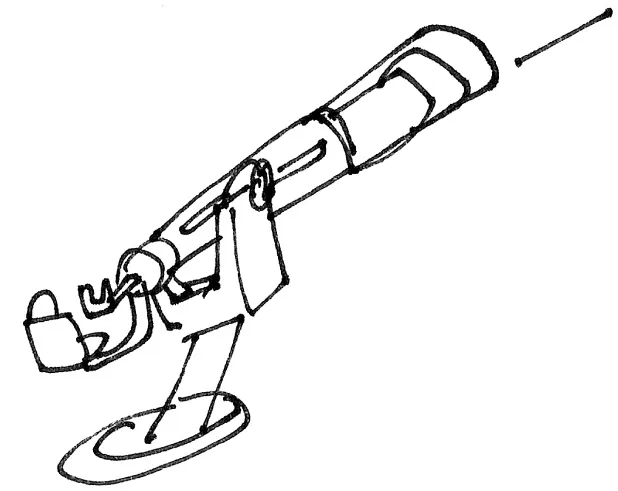
Climbing up what seems like little more than a stepladder, you are suddenly in a beautiful white, circular expanse. Brian had been up there before, including once for the shooting of a D:ream pop promo, but his trademark delight is not reserved for the TV cameras alone.
Our smiles are beatific. We climb a little up the side of the dish, the curvature creates an illusion that conceals the increasing steepness. The sky almost matches the colour of the dish. We look up and think of the data collected in this bowl. An Arctic-white steel structure in the middle of meadows should feel cold, but it doesn’t.
Here is the gatherer of radio waves emitted by astronomical objects. Here is the where signals of the metal-nosed Tycho Brahe’s supernova were picked up. This is the place that tracked Luna 2 to the Moon. This is where quasars were defined and pulsars observed. This is not psychogeography, this is psychoastronomy. Carl Sagan stated that astronomy was a humbling occupation, and never have I felt that more fiercely than in the near silence of the Lovell Telescope. Like some psychosomatic sense of feeling all those neutrinos passing through you, your imagination fabricates this same sensation of signals coming from beyond our galaxy.
Back in the café, I ask Brian about gravitational waves. Here is another great day proving the frequent necessity of delayed gratification when it comes to physics. Sometimes a good idea needs to wait for the technology to be created to test it. This story starts with two black holes merging. As they merged, briefly there is a power output five hundred times greater than all the stars in the known universe. Lasers have detected the waves.
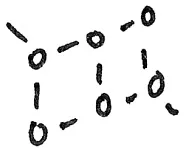
Here is the gatherer of radio waves emitted by astronomical objects. This is where quasars were defined and pulsars observed.
This is not psychogeography, this is psychoastronomy.

Brian explained it like this.
Brian: 1.3 billion years ago a storm in space and time was generated by the collision of two black holes. One of the black holes was 29 times the mass of our sun, the other 36 times more massive. The event lasted for less than two-tenths of a second, during which time the black holes accelerated from a closing speed of one-third of the speed of light to two-thirds of the speed of light before colliding and merging. Energy was lost to the system in the collision and the storm carried it away at the speed of light. For a tiny fraction of a second, the peak power output exceeded the power output of the entire observable Universe by a factor of fifty. 1.3 billion light years away on a small planet around a yellow star, salt water oceans were populated by single-celled organisms. As the spacetime storm approached, some of these single-celled creatures became organised into collaborative multi-cellular groups, colonised the land, learnt how to do science and built two giant laser facilities with 4km-long arms at right angles to each other at each end of a country called the United States. They switched on the lasers, which they called LIGO and had just upgraded, on 12 September 2015, and two days later at 5.51 a.m. Eastern Standard Time on 14 September 2015, the storm passed through the Earth, changing the effective length of the arms of the detectors by one-thousandth of the diameter of a proton. The signal, described in the box below, was exactly as predicted by Einstein’s Theory of General Relativity, first published a century before when nobody knew about black holes or lasers. Life can achieve a great deal in 1.3 billion years.
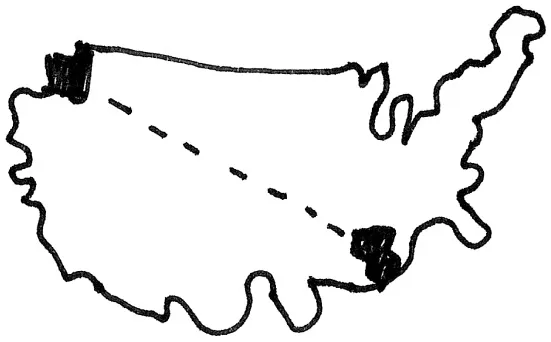
Some thirty minutes later, Brian finished the story, or at least came to the point of the story where we were now at, because the story continues with each new discovery. He leaned back in his chair, reached for the hot pie that had been brought to him, bit into it, and let out a yelp.

‘Ow, it’s scorching.’
He huffed, puffed and reached for his water, in obvious tongue-blistering discomfort. And I thought that there was something rather beautiful about that. Here is a human who can have a deep understanding of the nature of our universe, yet no understanding of the speed of the cooling of a pie.
While touring, barely a week went by without Brian burning his mouth on some hot food. I would try to train him.
‘Chips, hot.’
‘Hot chips,’ he would smile, before singeing his lips again.
‘Remember what happened last time with the hot chips.’
‘Hot chips,’ he would smile again, then screech as his tongue swelled.
Finally, I realised, there was nothing to be done. The small area of space where my brain had a series of connections to remind me that food sometimes needed to be cooled before it could be consumed had been used up by Brian to comprehend quantum entanglement. That was my tragedy. That was his tragedy. He would continue to burn himself on pie filling, but I would never truly understand how two photons could interact from a distance.

The LIGO Hanford Observatory in Washington State.

The LIGO Livingston Observatory in Louisiana.

The LIGO Experiment
The LIGO experiment consists of two devices known as laser interferometers. One is situated on the north-western seaboard of the US in Washington State, the other in the south east in Louisiana. Each arm consists of a 4-kilometre-long vacuum tube with heavy mirrors suspended at each end and a high-intensity laser beam bouncing between them. As a gravitational wave passes through the experiment, it changes the effective distance between the mirrors in a characteristic way predicted by Einstein’s Theory of General Relativity. Because the arms are at right angles, the prediction is that one arm will shrink as the other expands. Using a technique called laser interferometry, differences in the round-trip time of the photons as they bounce between the mirrors can be measured very accurately. The extreme precision, which is equivalent to measuring the distance to our nearest star to our solar system, Proxima Centauri, to less than the width of a human hair, is achieved by averaging the measurements over the very large number of photons in each high-intensity laser beam. Gravitational waves pass through the Earth at the speed of light, and because the two LIGO sites are separated by 3002 kilometres, an identical signal would be expected in both interferometers, with a time-delay equal to the light travel time between them, if the vibrations of the mirrors have an astrophysical origin.
The collision of two black holes, as imaged by LIGO
The upper left-hand graph shows the results from the Hanford Observatory, and ...